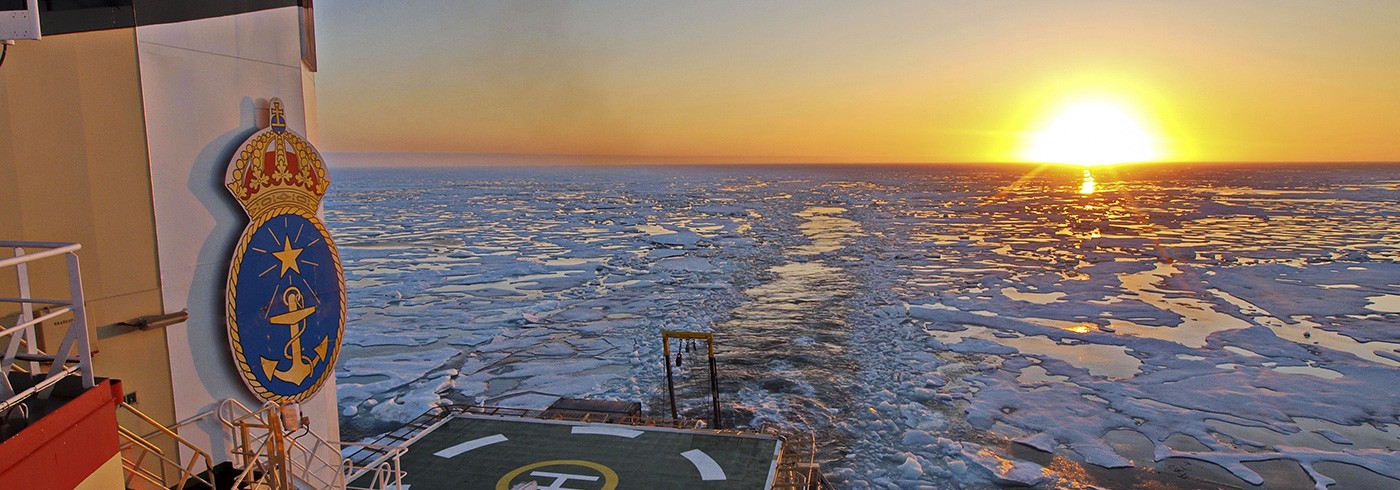Exploring the role of clouds in shaping the new Arctic climate
5 July 2014 - 4 October 2014Clouds remain a large uncertainty in our understanding of the climate system over the Arctic Ocean, especially for their impact on surface energy fluxes. Here, a unique environment creates conditions where impacts of clouds differ from those in other parts of the world. Understanding of involved processes is poor partly because of lack of direct observations. During SWERUS-C3, the Arctic Clouds in Summer Experiment (ACSE) studied these processes in detail. Measurements were made in the eastern Arctic Ocean sea ice and in open water from summer to early autumn. The variability of surface conditions and seasons allowed a large number of different processes and interactions to be studied.
We instrumented Oden with a suite of in-situ and remote sensing instruments. A bow mast, 20 m high above the surface, was equipped with instruments to measure vertical fluxes of momentum, heat, water and aerosols. On the top deck, we measured standard meteorological variables, incoming solar and thermal radiation, clouds and horizontal visibility; we also launched 6-hourly radiosondes from the helipad. On the roof of the main deck lab we deployed cloud and wind radars, a lidar, ceilometers, and several microwave radiometers to remotely probe the atmospheric boundary layer and clouds.
Our first results indicate the importance of atmospheric transport, from south in summer and north in autumn, producing clouds, thermal conditions, and turbulent heat fluxes that allow numerous processes to act in concert, producing melting in summer and freezing in autumn. Clouds play an important role, promoting rapid melt in summer and retarding surface heat loss during autumn.




